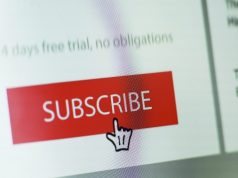I was at an event the other day when I met a very smart, respected, and likeable business owner, named Ron.
We got to discussing LinkedIn, and I asked him how many connections he had. He mentioned he had around 300, and then went on to proudly proclaim that he knew “all of them personally, save three or four”.
When I asked him whether he had considered inviting people to join his network whom he did not know personally, he said he did not feel comfortable connecting in this manner. He had formed such a strong policy against this, that he felt compelled to physically meet people for a coffee prior to accepting their invitation request.
Obviously Ron’s approach, while highly personal, is also highly inefficient, time-consuming, and non-scalable.
LinkedIn as the B2C model
Interesting isn’t it. When a B2C company is promoting a new product, it does everything in its power to reach the masses without the slightest care for knowing each member of its audience personally. TV, radio, press, outdoor, search marketing, banner advertising, email advertising – these offer large, lucrative audiences where impersonal relations are the norm.
Imagine now if this B2C company were to suddenly change its marketing approach. Imagine if it decided to sell its new products only to its existing customer base and business partners.
The lost market share opportunity!
Online networking is similar to B2C marketing. If you agree that you and your company are the product, then of course you want your brand to reach as many potential clients and influencers as possible.
Why? Because the more your personal and company brand are known to your target market, the better your chances of generating a sales lead, and the sale itself.
On LinkedIn, this means connecting with as many high-quality prospects and influencers as possible, within your target market.
Yet, there are thousands of people just like Ron, who unintentionally self-limit themselves and their market share opportunity, by insisting on connecting only with those they know personally.
I do not blame Ron, nor any of the others I have met just like him. The truth is, it is hard to reach out to professionals whom you don’t know – especially if their LinkedIn profiles make them appear busy and important. It can be downright awkward, even scary – no one wants to be rejected by those they want to connect with.
How to Connect on LinkedIn without Fear
You have identified your target market on LinkedIn. You are ready to start inviting prospects and influencers, and expand your network. So how do you do it, in a safe and sound way?
My advice is simple: look for Human Connection Points.
Human Connection Points are the commonalities you find by reviewing your intended connection’s LinkedIn profile, Twitter posts, personal blog, and other online mentions. There are dozens of human connection points you can use, but here are some of the obvious ones:
- People you know in common (available on their LinkedIn profile)
- LinkedIn groups you share
- Their blog posts or published articles (i.e. the ones you have read and enjoyed so much, as to form an opinion)
- Schools you both attended
Once you have identified your human connection points, you are ready to write your LinkedIn invitation.
Be relevant. Make sure to address your invitee by their first name, and to clearly reference your connection points. Throughout your invitation, be genuine and respectful. Tell them how you found them, and why you want to connect. And make sure to pump up your credentials as well, via a strong LinkedIn profile.
If you follow this approach, you will experience a consistently high acceptance rate, and grow your LinkedIn network faster among your target market. You are now in a position to start marketing your company to a progressively larger audience, who will get to know you through your status updates and group participation.
Of course, not all will accept, but that’s ok. By following the principles mentioned above, and optimising as you go, you will find your acceptance rate (and LinkedIn network reach) continues to increase.
Since 2007, Tom Skotidas has worked as head of marketing and business development at First Rate, one of Australia’s leading digital marketing agencies. In just under four years, Tom has helped grow the agency into one of Australia’s dominant players in search and performance marketing. One of the drivers behind Tom’s success in business development lies in his pioneering use of social media to generate sales leads. Today, he teaches the strategies and tactics of social media lead generation to audiences in Australia. More: tomskotidas.com.





![Strategic Alliances with Simone Novello [FREE INFOGRAPHIC]](https://anthillonline.com/wp-content/uploads/2015/08/Capture6-300x194.jpg)
![Five essential things to get right if you want to raise capital, with Bryan Vadas [FREE CHEAT SHEET]](https://anthillonline.com/wp-content/uploads/2015/08/vadas-3d-cover-01--100x75.png)
![The Facebook Honey Trap with James Tuckerman [CHEAT SHEET]](https://anthillonline.com/wp-content/uploads/2015/11/Screen-Shot-2015-11-26-at-11.34.14-100x75.png)
![Seven essential steps to a successful podcast with Loren Bartley [Cheat Sheet]](https://anthillonline.com/wp-content/uploads/2015/11/Screen-Shot-2015-11-26-at-11.21.58-100x75.png)
![How to expand into New Markets with Elsita Meyer-Brandt [CHEAT SHEET]](https://anthillonline.com/wp-content/uploads/2015/07/Screen-Shot-2015-11-26-at-15.52.30-100x75.png)
![Four Page Digital Marketing Strategy [FREE RESOURCE]](https://anthillonline.com/wp-content/uploads/2015/01/FOUR-PAGE-IMAGE-100x75.png)

![Has Facebook ruined your wall with meaningless ads and updates? Here’s where Facebook’s bad ideas from [VIDEO]](https://anthillonline.com/wp-content/uploads/2013/01/facebookfocusgroup-300x285.jpg)
![Instagram for Business… in 12 steps [FREE INFOGRAPHIC]](https://anthillonline.com/wp-content/uploads/2015/08/Capture7-300x194.jpg)
![How to secure lucrative sponsorships in five steps [CHEAT SHEET]](https://anthillonline.com/wp-content/uploads/2016/02/jackie-fast-meme-04-100x75.jpg)
![Five ways to manage your time by managing yourself, with Helen Ebdon [CHEAT SHEET]](https://anthillonline.com/wp-content/uploads/2015/07/ebdon-3d-cover-01--100x75.png)
![Strategic Alliances with Simone Novello [FREE INFOGRAPHIC]](https://anthillonline.com/wp-content/uploads/2015/08/Capture6-100x75.jpg)
![New Zealand’s Xero eyes US IPO, further disruption as subscribers increase [INFOGRAPHIC]](https://anthillonline.com/wp-content/uploads/2014/07/sruuuuujana-212x194.png)
![Ever wonder if your ‘content marketing’ is really just crap? You gotta see this! [INFOGRAPHIC]](https://anthillonline.com/wp-content/uploads/2014/08/content-100x75.jpg)
![7 Business Lessons From Game of Thrones [INFOGRAPHIC]](https://anthillonline.com/wp-content/uploads/2014/10/infographic-games-of-thrones-041-100x75.jpg)
![How to build your own Media Empire… In seven steps with Nathan Chan [INFOGRAPHIC]](https://anthillonline.com/wp-content/uploads/2014/10/Nathan-Chan-Infographic-e1413419529176-100x75.jpg)
![5 Business Lessons From Tinder [INFOGRAPHIC]](https://anthillonline.com/wp-content/uploads/2014/10/Tinder-Elegant-Infographic-100x75.jpg)



